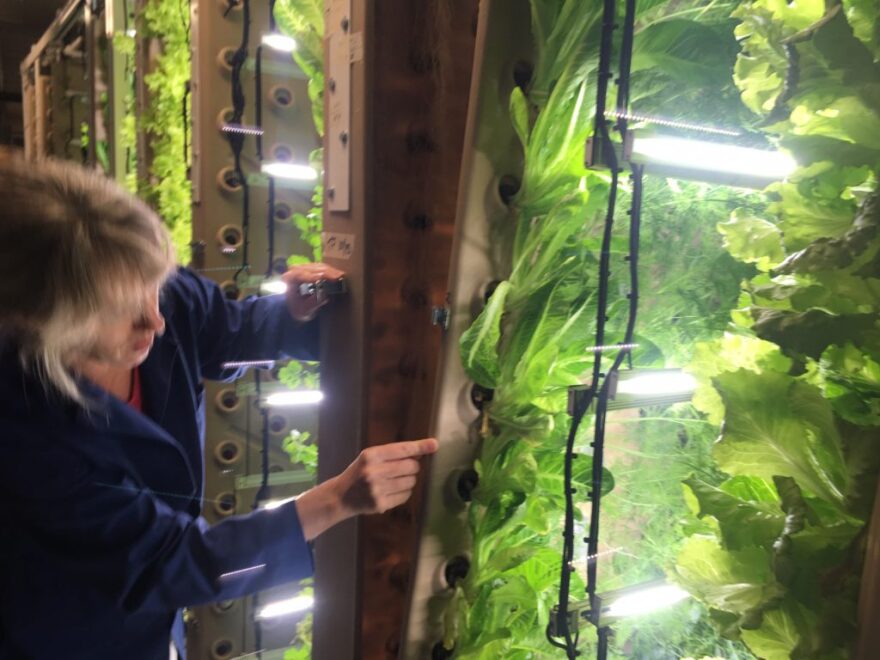Not many brewing companies employ a full-time gardener, but not many brewing companies have a full indoor aeroponic garden above their brew room. I have to slip soft blue booties over my shoes before I go inside to meet Amy Erfling so I don’t contaminate the produce.
Erfling gardens in a 1,200 square foot room full of organic herbs and lettuce at Skagway Brewing Company. Her operation harnesses the carbon dioxide produced by brewing to fuel the plants. Growing the local produce is both supplying the brewery's restaurant and adding a layer of food security to the remote southeast community.
She gestures towards one of the “beds.”
“So there is a green oak leaf, and a red oak leaf… and then we have a couple of summer crisps in there,” she said.
If you’ve never seen an aeroponic garden before, picture a warm, humid space full of what look like twin mattresses hanging from the ceiling. But where the mattress would have a cushion, these have plants.
It’s snowing outside, but it’s about 75 degrees in the garden. And there's a hum from a bunch of fans that keep air circulating.
The fresh air is augmented by carbon dioxide, which is known to boost plant growth. It’s also conveniently a natural waste product from the brewing process. So a little pipe in the wall takes that gas from the brew room up to the garden where it speeds photosynthesis. Water laced with a nutrient mixture sprays down plant roots every eight minutes.
The garden produced over 100 pounds of lettuce a week this summer, when tourists poured off of cruise ships and into the brewery’s restaurant.
This winter they’re producing about half that. But that’s still about about 60 pounds of lettuce herbs and kale a week that would otherwise have to be imported.
“We really can’t grow this in the winter up here. So it’s such a short growing season outdoors that this is something that you can actually do year round,” said Erfling.
It’s enough for the salads on the brewery’s menu, with a lot of leftovers. They sell those to community members. Any extras are donated to the school cafeteria or the Elks Lodge.
“Your food security is only as strong as your weakest link,” explained Elizabeth Hodges, an associate professor at University of Alaska Fairbanks. She’s also worked for the state’s Food Policy Council.
“Most of our state does rely on the vast majority of our food to come in from outside or from a community outside of our own community. You are vulnerable to disruptions.”
Locally produced food improves food security because there’s no supply chain to break down. And she said it’s not just nutrients that stay local.
“There’s countless studies to show that for every dollar that goes into the local food economy, it has an amplifying effect, or a ripple effect throughout that local food economy. So then the individual who spends that dollar in the community on that local food, that dollar stays in the community,” Hodges said.
That’s part of the plan for Skagway Brew Co. In their first year gardening they produced 100 percent of the greens for their restaurant.
And that’s starting small. The garden can easily double what it produced this summer. They are working on a deal to stock their produce in local stores next year.


